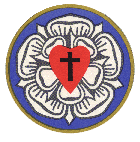Signs and Teaching
John calls the miracle at the Cana wedding “the first of [Jesus’] signs.”
Signs: Greek semeia; revelations of God’s mind and work. Not only are these miracles but they are actions demonstrating that Jesus is the Messiah.
John refers to “signs” seventeen times in his Gospel. What effect did these signs have on people? (See John 2: 11, 23—25; 12: 37—38; 20: 30—31)
After the “Cleansing of the Temple,” Jesus is asked to produce a sign that will give evidence to his authority. What “sign” does he give the Jews? (2: 19) What does John “give away” in verse 22? Why do you think he does this?
For that matter, why do you think John places the “Temple Incident” towards the beginning of his book, when the other Synoptic Gospels put it towards the end? (John 1: 11 might be helpful in answering this question.)
Why is Nicodemus willing to call Jesus “a teacher come from God”? (3:2) What stereotype does Nicodemus instantly explode? (3:1)
According to Jesus, how does one “see and enter” the kingdom of God? (3:5)
The original language adds clarity and a greater sense of wonder to Jesus’ saying about himself as the “Son of Man” in 3: 13. Rendered literally, it says, “And no one has gone up into the heaven except he who out of the heaven came down, the Son of Man who is in the heaven.” (Remember the full meaning of “Son of Man” from Daniel 7: 13.) What does Jesus say must happen to the Son of Man? (3: 13; Numbers 21: 9)
John 3: 16: Loved: Greek agapao; sacrificial, unconditional, selfless love
Subscribe to:
Post Comments (Atom)


No comments:
Post a Comment